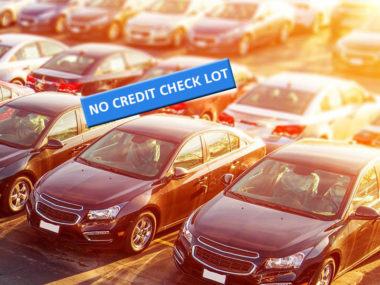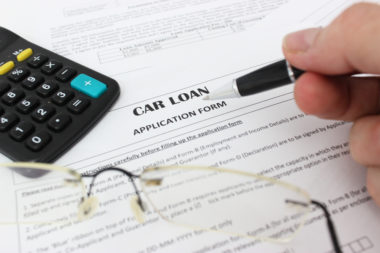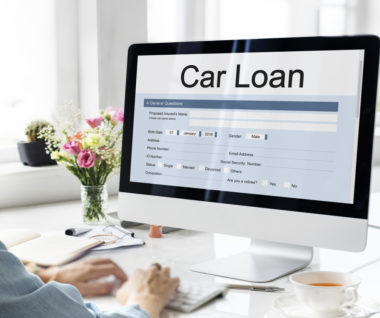Car loan payments can make up a significant portion of your monthly budget. However, a change in your financial situation may mean that your car loan payments are no longer feasible for your budget, and you need to get out of your loan. There are a few things you’ll need to understand about how your loan functions, and the state of your loan before you can make a plan to get out of it.
Table of Contents
Review Your Car Loan Terms
There are three basic terms you need to know when it comes to your car loan.
- The principal is the amount of money you borrowed to pay for the car, not including the down payment.
- The term is how long the loan lasts — in 2019, the average car loan was about 69 months for a new car.
- The interest is what you pay on top of the principal, or the price of borrowing from the lender. This is expressed as an annual percentage rate (APR).
For example, if you had a $10,000 loan and an APR of 3% thanks to a super prime credit score, you would pay a total of $10,781.40 over the term of the loan, thanks to interest. Knowing the details and functions of your car loan terms is the first step to getting out of a car loan with minimal hassle or financial damage.
Calculate Your Equity
Knowing your car’s equity will tell you where you stand in terms of your loan health. Your equity is the difference between how much you owe and the resale value of your car. Calculating your equity is a way of quantifying how much of your car you actually own.
You can find the equity of your vehicle by comparing the remaining balance on your loan to the market price of your vehicle, or how much you could sell it for. You can use resources such as local ads, Kelly Blue Book, or Edmunds to determine what your car’s market value is.
Ways You Can Get Out of Your Car Loan
Once you’ve reviewed your loan terms and calculated your equity, you start moving to get out of your loan. If your equity is positive, or the market value is more than what you owe on your loan, there are some fairly easy ways to settle your car loan.
Sell Your Car to Another Driver
Your first option is to sell your car to another driver. You can either use the money from the transaction to pay off your loan, or have the buyer legally take over your car loan. If you’re trying to get the loan transferred, you’ll want to be clear about the terms, and run a credit check on your buyer. Not all buyers will be eligible to take over your loan. You can talk to your lender about what criteria a buyer would have to meet in order for the loan to be transferred.
Sell Your Car to a Dealer or Retailer
Many car dealerships offer trade-ins or no-hassle offers for people looking to sell their car on a time crunch. You can still trade-in your car even if you don’t own it outright. These are typically cash offers made by the dealer, based on the condition of the car, and how likely the dealer is to resell it.
Trade-in offers are usually less than the market value of your car, but if you don’t want to go through the process of selling your car yourself, or need to liquidate your car quickly, they can be a great option. Make sure when you’re looking to trade in your car that the dealership offers cash for trade-ins — some only offer trade-ins if you’re buying a new car.
Refinance Your Loan
If you have consistently made your monthly payments on time and have a good credit score, you may be able to refinance your loan for a new, better interest rate. This can lower monthly payments and decrease your overall interest. However, it does cause a hard inquiry on your credit report, which will lower your credit score a few points for a few months.
Negotiate With Your Lender
Just like any loan company, your car loan lender just wants to get their money back and make a profit. If you’re unable to repay your loan at the moment, and selling your car isn’t an option, you may be able to negotiate a modified repayment plan before your loans get sent to default.
If you won’t be able to pay back your car loan at all due to extenuating circumstances, you may be able to negotiate a settlement for the loan. From the lender’s point of view, they don’t get anything extra from sending your account to default, and having some return on their loan is always better than none.
Ways to Get Out of an Upside-Down Car Loan
Above are ways that you can get out of your car loan if you have positive, or close to positive, equity. But if you have a negative equity — if the market value of your car is less than your loan balance — then your car loan becomes upside down. Paying off an upside-down loan can be more difficult, as simply selling your car may not be enough — or even an option. If you have an upside-down car loan, here are some ways you can mitigate the damages.
Increase Your Payment Frequency
If you can, make more than one payment a month. This is a good way to decrease the discrepancy between the market value of your car and your car loan, by simply decreasing your loan. You don’t have to pay the say amount on each extra payment — you can pay as little as an extra $30 a month — but increasing your payment frequency can decrease your loan balance, and help counter any negative effects your upside-down loan may have on your credit score.
Negotiate and Refinance
If you have high credit, refinancing your loan could help mitigate the negative equity. If you are able to negotiate a better interest rate, it can get you closer to breaking even, or, in some cases, get you from the red to the black. You can also try and negotiate a different payment schedule with your lender, depending on your current budget.
Declare Bankruptcy
If you aren’t able to refinance or negotiate new terms, you might need to declare bankruptcy. This will, overall, do less damage to your credit than continually missing payments and going into default. Make no mistake — declaring bankruptcy, in all likelihood, will lower your credit. This is the last resort you should turn to. If your bankruptcy terms require you to make payments, they will likely be less than you are paying for your car loan.
Getting out of your car loan can entirely depend on your circumstances and available resources. It is unlikely you will come out completely unscathed financially, especially if you have an upside-down car loan, but you can lessen the damages by being proactive, and communicating with your lender.
Image Source: https://depositphotos.com/





